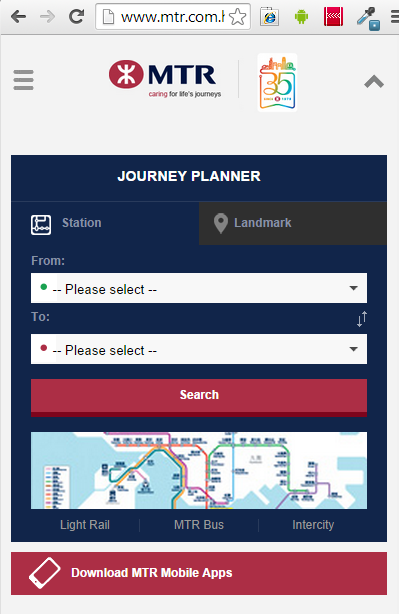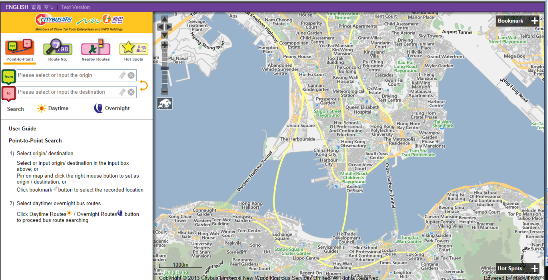“My goal is to do the most with the least—get the maximum output with the minimum input. ”
― Jarod Kintz, This Book Has No Title
* For this article $ = HKD.
One of the things that tourists think of when going to another country, especially for the first time, is going around without being lost and be at a certain place at a certain time as planned and without delays. When in Hong Kong, you will never get lost if you know how to use their mass transportation — one of the most efficient and effective in the world!
The Octopus Card
Before discussing the forms of transportation that tourists can ride in Hong Kong, be informed first about the very handy and hassle-free Octopus Card. It is a no-contact stored value card for making payments electronically. It was originally designed for an easier collection of fares for their mass transit system. It has grown to be used to pay in various shops in HK: from convenience stores to supermarkets, from vending machines to fast-food restaurants, from on-street parking to car parks and even online payments!
Octopus Card comes with different varieties but the On-loan Card for Adult would be used as reference in this article since it’s the type tourists could easily get. The On-load Card could be acquired from the customer service centers in pier, airport and MTR stations for an initial stored value of $100 plus a refundable deposit $50. For a 4-day tour, I suggest to have an initial deposit of $200. I recommend that you buy your Octopus card when you arrive at the airport.
Read more about Octopus Cards in their website.
MTR: Caring for Life’s Journeys
One of the most efficient rapid transit railway systems in the world, MTR, as of this writing, operates nine main commuter lines serving Hong Kong Island, Kowloon and the New Territories, and the Airport Express, which is a dedicated express rail link providing the fastest connections to HK International Airport and AsiaWorld-Expo. MTR also offers a direct MTR path to Disneyland Hong Kong.
Passengers can also travel to the mainland of China (Guangdong, Beijing and Shanghai) using the MTR’s intercity railway services. The MTR station provides lots of facilities such as Customer Service Centers, ATMs, convenience stores and free internet services.
Single journey tickets could be purchased on self-service ticket machines. Passenger just have to choose his destination and insert the required amount of coins, and voila, the ticket would be dispensed. Of course, it’s better to use an Octopus Card to have discounted fares. By the way, fares are computed based on the distance between your starting and ending stations regardless of which available path a passenger takes (provided that you will never get out of any stations in between). MTR lines cross or overlap with each other on two or more interchange stations, so, a passenger could take a different path from another even both of them will go on a same place.
Having that said, it is very important to really plan your journey on MRT ahead of time to avoid wasting time taking a longer path. I recommend that you download their mobile app to your Android or iPhone. You may also use the MTR site to plan your MTR journey. Just in case you won’t be able to access these apps or site, the MTR system maps and directions are posted almost everywhere in and out of the paid area of each station,
With the Journey planner (either in the app or in the website), just select the stations of your origin and destination from the drop down and click search. It will then give you the optimal path with estimated fare and journey time.
For example, let’s say I’m coming from the airport and I want to go to Tseung Kwan. The Journey Planner result will look like the image below. It says that the journey time from Airport to Tseung Kwan O is approximately 67 minutes. It also give you the fare info using the Octopus card or single journey ticket(s). You may click “hide” on the top-right corner of the blue and red boxes to see the line map.
When you scroll down below, the Journey planner result page, you will see the route view. This view shows you the MTR lines and interchanges that you have to take.
Interchanges were planned carefully so that passengers could transfer from one line to another without hassles. Another good thing to mention is that the exits of each station was strategically placed to reach key places near the MTR station as fast as possible through air-conditioned subways. During peak hours, trains come and go more frequently.
In terms of safety, several lines has platform screen doors to avoid passengers from falling onto the rails. CCTV cameras are also installed in the stations. Safety reminders to passengers are regularly announced. During peak hours in the morning, there are stations (e.g. Central) where dedicated MTR personnel are guiding and assisting the passengers to safely aboard the train. They are also in-charged to control the crowd aboarding the train.
Like in any other establishments, there are rules that passengers must observe. According to the Mass Transit Railway By-Laws, eating or drinking, and smoking are not allowed in the paid area of stations or in trains. Offenders will be fined of at most $5,000.
Bus
There are parts of Hong Kong that you need to ride the bus in order to reach it such as Ocean Park Hong Kong.
Bus lines in HK were planned carefully like the trains. The bus routes and stations were strategically placed throughout the territory. Buses are numbered depends on its routes. The number and the last stations are displayed in front of the bus.
Fares could be paid by dropping coins or by waving your Octopus Card over the terminal. Passengers are not given change when using coins, so it is recommended to use the Octopus Card to pay no-more-than the exact fare. Fares are calculated based on the distanced from terminal to terminal regardless of what station a passenger alight and depart. So in order to save money, check the Interactive Route Search tool on Citybus’ site. (There’s no direct URL to the tool but you may find “Interactive Route Search” when you hover over your mouse on the “Route and Services” in the header menu.)
To use it, input your origin and destination to the respective input boxes, then click Daytime or Overnight. A list of possible bus lines (and interchanges if it is needed to use more than one bus) should appear on the lower left. Click one from the result and the map will show you the path. The lower left pane will display a detailed info about the selected bus line including the fare and the stations that the line goes by.
Taxis, trams, cable car and ferries are discussed on the next part.
For questions, feel free to leave a comment below.
Love,
Lakwatserong Developer





